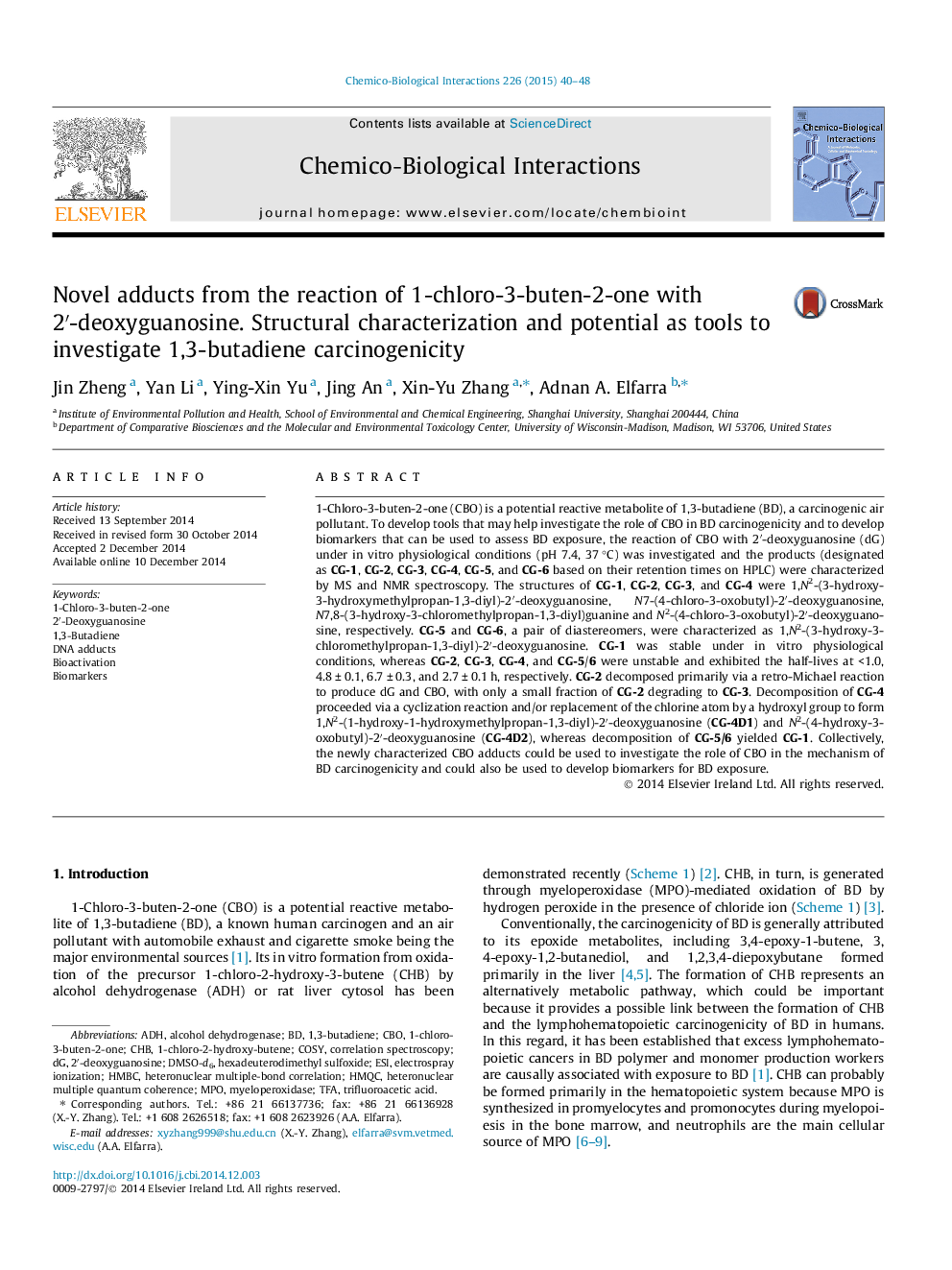| Article ID | Journal | Published Year | Pages | File Type |
|---|---|---|---|---|
| 5847973 | Chemico-Biological Interactions | 2015 | 9 Pages |
Abstract
1-Chloro-3-buten-2-one (CBO) is a potential reactive metabolite of 1,3-butadiene (BD), a carcinogenic air pollutant. To develop tools that may help investigate the role of CBO in BD carcinogenicity and to develop biomarkers that can be used to assess BD exposure, the reaction of CBO with 2â²-deoxyguanosine (dG) under in vitro physiological conditions (pH 7.4, 37 °C) was investigated and the products (designated as CG-1, CG-2, CG-3, CG-4, CG-5, and CG-6 based on their retention times on HPLC) were characterized by MS and NMR spectroscopy. The structures of CG-1, CG-2, CG-3, and CG-4 were 1,N2-(3-hydroxy-3-hydroxymethylpropan-1,3-diyl)-2â²-deoxyguanosine, N7-(4-chloro-3-oxobutyl)-2â²-deoxyguanosine, N7,8-(3-hydroxy-3-chloromethylpropan-1,3-diyl)guanine and N2-(4-chloro-3-oxobutyl)-2â²-deoxyguanosine, respectively. CG-5 and CG-6, a pair of diastereomers, were characterized as 1,N2-(3-hydroxy-3-chloromethylpropan-1,3-diyl)-2â²-deoxyguanosine. CG-1 was stable under in vitro physiological conditions, whereas CG-2, CG-3, CG-4, and CG-5/6 were unstable and exhibited the half-lives at <1.0, 4.8 ± 0.1, 6.7 ± 0.3, and 2.7 ± 0.1 h, respectively. CG-2 decomposed primarily via a retro-Michael reaction to produce dG and CBO, with only a small fraction of CG-2 degrading to CG-3. Decomposition of CG-4 proceeded via a cyclization reaction and/or replacement of the chlorine atom by a hydroxyl group to form 1,N2-(1-hydroxy-1-hydroxymethylpropan-1,3-diyl)-2â²-deoxyguanosine (CG-4D1) and N2-(4-hydroxy-3-oxobutyl)-2â²-deoxyguanosine (CG-4D2), whereas decomposition of CG-5/6 yielded CG-1. Collectively, the newly characterized CBO adducts could be used to investigate the role of CBO in the mechanism of BD carcinogenicity and could also be used to develop biomarkers for BD exposure.
Keywords
ESIDMSO-d6HMQCCHBCBODNA adductsTFAADH1,3-Butadiene2′-deoxyguanosineMPOTrifluoroacetic acidAlcohol dehydrogenaseheteronuclear multiple quantum coherencecorrelation spectroscopyBioactivationmyeloperoxidaseBiomarkersHMBC یا Heteronuclear Multiple Bond Correlationheteronuclear multiple-bond correlationCOSYelectrospray ionization
Related Topics
Life Sciences
Environmental Science
Health, Toxicology and Mutagenesis
Authors
Jin Zheng, Yan Li, Ying-Xin Yu, Jing An, Xin-Yu Zhang, Adnan A. Elfarra,
